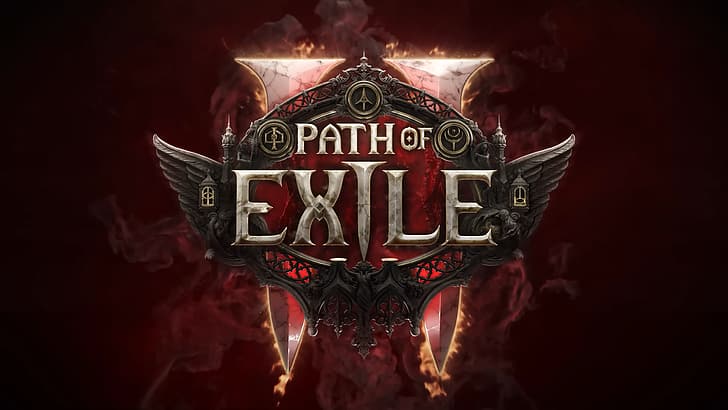Explore the Early Access of Path of Exile 2, including release dates, gameplay updates, and essential tips. Stay informed with the latest details on preparing for this highly anticipated sequel to the action RPG!
The Blix team has compiled all available information regarding the launch of Path of Exile 2 and is excited to share it with our readers. In this article, we cover the key aspects you need to know ahead of the upcoming launch. For all the official details about Early Access, visit the link.
Contents
- 1 PoE 2 Cinematic Thoughts
- 2 PoE 2 Best New Features Explaining
- 3 6 Act Campaign
- 4 Early Access Available Classes
- 5 Skill Gems
- 6 Passive Skill Tree
- 7 Dual Specialization
- 8 Crafting and Itemization
- 9 Jars and Keychains
- 10 The Endgame Content
- 11 Trial of the Sekhemas
- 12 The Trial of Chaos
- 13 Breach
- 14 Expedition
- 15 Ritual
- 16 Delirium
- 17 Pennance Threat
- 18 Join Early Access
PoE 2 Cinematic Thoughts
The cinematic film reveals the main antagonist’s identity and explains his motives. In summary, the Kalguurans sought the spoiled seed and took it from the hooded man. His level of humanity remains uncertain, but there are suspicions that he is Sin, the deity from the first installment. We will learn more about this in the game itself.
The gameplay trailer showed one of the most mysterious characters, Doryani, Royal Thaumaturge, who worked for Azmeri. He is the one who will act as a boss officer in the future, as we saw a fight with him in the trailer.
PoE 2 Best New Features Explaining
6 Act Campaign

The Path of Exile 2 campaign takes place 20 years after Kitava’s defeat and the original game’s events. Players can choose one of six original or six new Exiles to explore the dangerous islands of Wraeclast. While the old gods are gone, many horrors await in the darkness. You’ll receive help from characters like The Hooded One, Alva, and Tujen.
The game will have 3 acts available during early access. The developers have stated that newcomers can expect to take about 25 hours to complete these acts. By the end of the 3 acts, players should be around level 45, with endgame content becoming accessible after reaching level 65.
To avoid overwhelming players with all 6 acts at once, after completing the first 3 acts, players will have the option to replay them on Cruel difficulty, which offers an increased challenge. The developers indicated that this second playthrough will be significantly faster, as players will already have their skills and equipment, allowing them to defeat enemies much more quickly.
Early Access Available Classes
In Early Access, we will have six classes to play with. The remaining characters will be available after the game’s official release.
- Warrior
- Monk
- Witch
- Enchantress
- Huntress
- Mercenary
The distinction between classes, as seen in the first part of the game, will be fluid. Each character will not be restricted to specific skills; the differences lie only in their starting position on the Talent Tree.
Respec now costs gold and is quite affordable, allowing players to experiment freely with their talents.
With the improvements to the Talent Tree, the small passive nodes that previously provided only a specific type of attribute (strength, agility, intelligence) now allow players to choose the attribute they prefer. For example, even in the initial branch of the Enchantress, players can focus on either strength or agility.
Skill Gems

In Path of Exile 2, Skill Gems are essential for customizing your character’s abilities and come in three main types: Active Skill Gems, Support Gems, and Buff Gems.
- Active Skill Gems are the foundation of your abilities and are linked to specific weapon types; for example, the Lightning Arrow gem can only be used with bows.
- Support Gems enhance these Active Skill Gems, allowing for additional effects like increased damage or projectile quantity. However, each Support Gem increases attribute requirements, so careful management is needed.
- Buff Gems provide various effects, including persistent buffs (like auras) that reserve Spirit and remain active until turned off, as well as temporary buffs that boost damage or defense.
As you advance in the game, you’ll find Uncut Gems that help you choose or enhance specific Skill, Support, or Buff Gems. This system allows for extensive customization to fit your playstyle.
Additionally, if you decide to switch to a different skill, it will retain the progression level of the previously used skill gem. This means you can experiment with different builds and playstyles without losing progression, offering greater flexibility and reducing the consequences of mistakes or suboptimal choices.
Passive Skill Tree
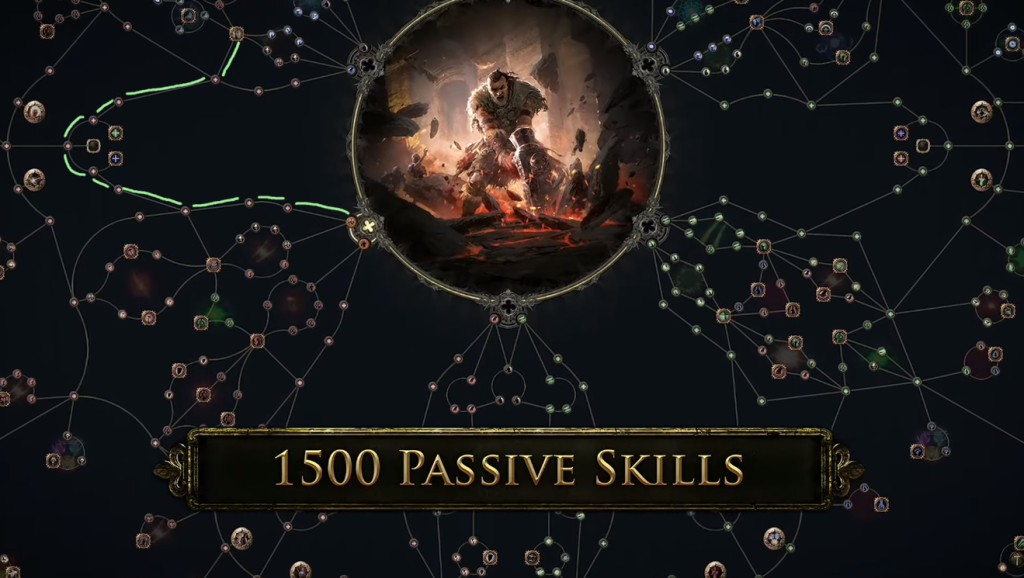
The revamped passive skill tree in Path of Exile 2 is designed to offer unprecedented customization and depth. It includes several types of passive points, which work together to shape your character:
- Attributes: The tree is segmented by attributes like Strength, Dexterity, and Intelligence. Each section focuses on specific themes (e.g., melee and defense for Strength, evasion for Dexterity, and spell damage for Intelligence), but players can branch into any section to meet their needs.
- Small Passives: These provide incremental bonuses, such as increased attack speed or minor boosts to attributes. They act as pathways to more powerful nodes
- Significant Passives (Notables): Larger nodes that provide substantial bonuses compared to small passives, often acting as milestones in a build. They are ideal for simplifying navigation by focusing on their effects
- Key Skills (Keystones): These are transformative nodes that significantly alter gameplay. They often come with trade-offs, such as “Giant’s Blood,” which allows wielding a two-handed weapon in one hand but doubles attribute requirements. These are fundamental in defining unique builds
In Path of Exile 2, a new resource called Spirit (Yellow bar) is introduced alongside Life and Mana. Spirit is used for persistent effects like auras, permanent buffs, and maintaining summoned minions. Unlike the traditional Mana reservation system in PoE 1, Spirit allows players to reserve its pool for these effects, freeing Mana for active skill usage.
You can increase your Spirit pool by defeating story bosses or using specific modifiers and items like Sceptres. This system enhances customization and opens new build possibilities.
Dual Specialization
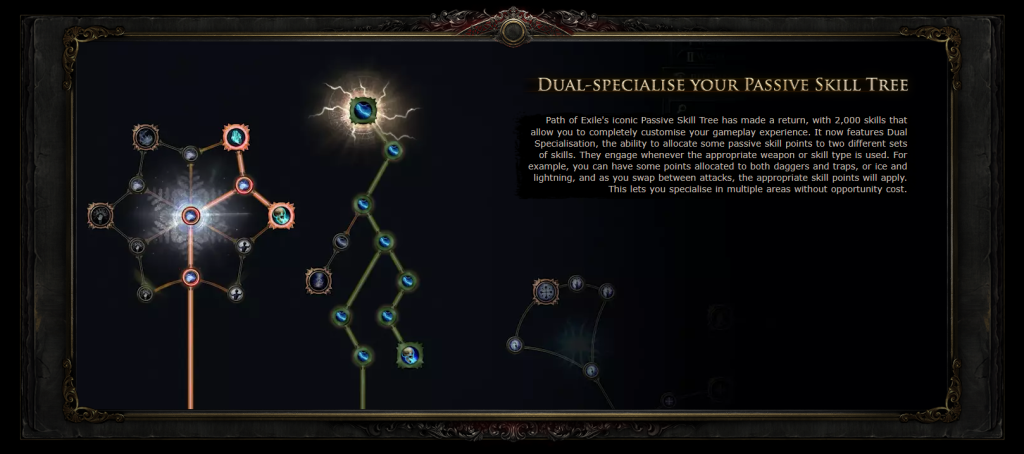
Path of Exile 2 introduces dual specialization, linking passive points to your active weapon. Players can assign skills to specific weapons and set up their Passive Tree to enhance particular skills or enable synergistic effects. While the number of nodes for Dual Specialization is limited, it offers new build possibilities that are not available in the original game.
In PoE 2, the passive tree differs from the original: no life nodes or masteries exist. Instead, it offers a broader range of usable nodes, with variations based on class. For instance, a Witch will find different passive nodes compared to a Sorceress.
Crafting and Itemization

In Path of Exile 2, item rarity categories remain consistent with the first game: Normal, Magic, Rare, and Unique. These categories differ primarily in the number of affixes (properties) items possess and the crafting systems applied to them. Here’s a breakdown of key points related to crafting and item improvement:
- Normal (White): Base items without affixes.
- Magic (Blue): Items with up to two affixes.
- Rare (Yellow): Items with up to six affixes (three prefixes and three suffixes).
- Unique (Orange): Items with fixed properties and distinct mechanics, usually tailored for specific builds.
The first three options differ regarding the additional properties available on the equipment and the crafting methods used. The crafting mechanics have slightly changed from the first part; Chaos Orbs are no longer used. Instead, we can enhance items with Essences or Exalted Orbs. Unique items will come with a fixed set of properties that cannot be altered, except for adding new properties using a Vaal Orb.
Regular equipment will feature rune slots that provide improvements to various characteristics and properties. This rune system is expected to offer players additional customization options for their gear. Different types of runes will allow you to enhance specific attributes of the item, potentially boosting things like damage, defense, or utility effects.
Jars and Keychains
There are only two jars for Health and Mana. The other jar slots are now replaced by Keychains, which are unlocked by upgrading the Belt. These Keychains provide specific buffs, such as Cold Resistance, and must be recharged after use to maintain their effects. This new system offers more strategic customization for the player’s defensive needs.
The Endgame Content
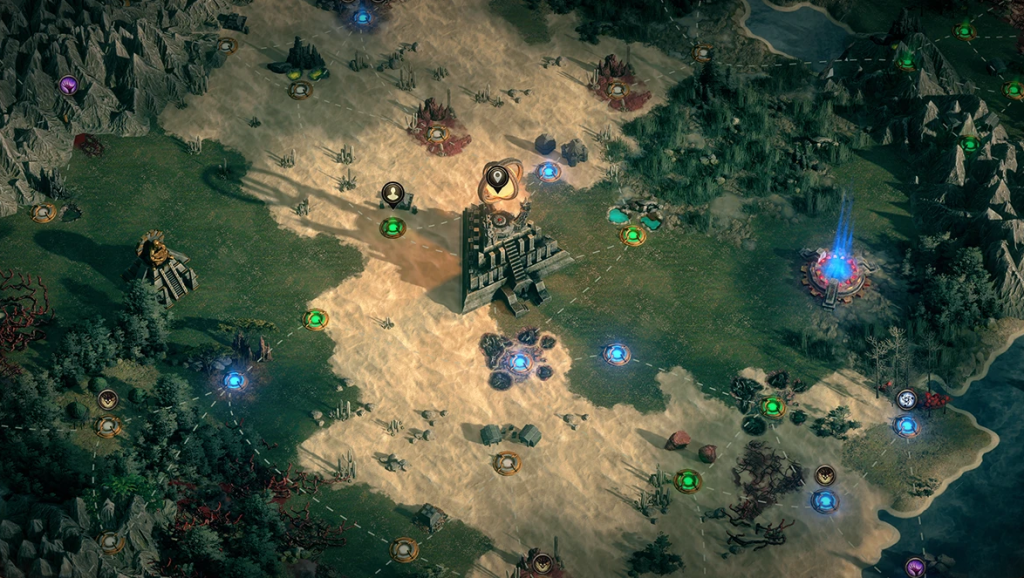
The Atlas in Path of Exile 2 is essential for endgame progression, building on the system from PoE 1 with more customization and depth. It comprises interconnected regions, each offering various maps to explore. Players will still face powerful bosses, but they can now tailor their journey using the Atlas Passive Tree.
This tree has three categories: a general mapping tree, a bossing-specific tree, and trees for individual map mechanics. Nodes within these trees adjust the difficulty and rewards of encounters. For example, defeating a pinnacle encounter can earn players points to enhance either the challenge or the loot.
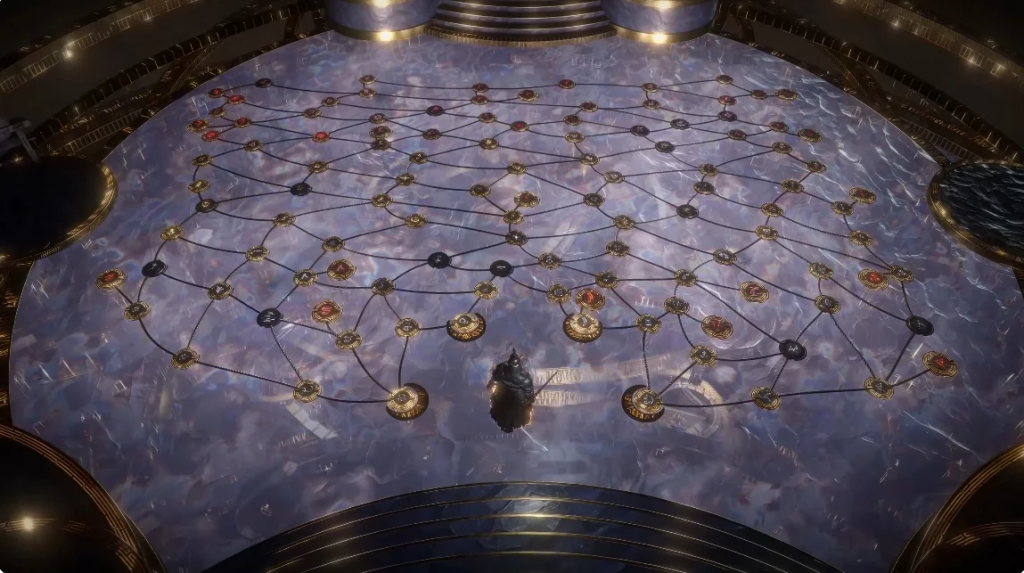
Watchstones are also important; players can socket them into specific regions to affect map difficulty and rewards. Strategically using Watchstones unlocks higher-tier maps and boosts loot drops.
Challenging bosses, like the Maven, require players to complete tough encounters to earn favor, which leads to better loot and additional challenges. With 400 types of mobs, bosses will only appear once every four maps. Players can bypass boss encounters if their builds aren’t suited for them, and these fights have become significantly more challenging.
Trial of the Sekhemas
The Trial of the Sekhemas in Path of Exile 2 is an endgame mode designed to test players’ combat skills and strategy. Players progress through various rooms with unique objectives and increasing threats, such as filling a Blood Chalice by defeating enemies or surviving brutal waves.
Completing each room grants loot, relics, or keys needed for advancement. The challenge culminates in a difficult boss fight, with rewards based on progress. However, dying or taking too many hits can send players back to the beginning, adding high stakes to the trial.
The Trial of Chaos
The Trial of Chaos in Path of Exile 2 is a challenging mechanic inspired by the Ultimatum system from the original game. It occurs in the Temple of Chaos, a structure historically used by the Vaal civilization to test their high priests. To enter, players must obtain an Inscribed Ultimatum, which serves as a key to participate in the trial.
This system emphasizes risk-reward gameplay, focusing on customization and strategy to maximize gains while managing potential dangers.
Breach
Breach is a dynamic endgame mechanic in Path of Exile (PoE) that focuses on defeating powerful enemies within a time-limited domain known as the Breach. In this mechanic, players encounter breaches, which are portals to alternate dimensions tied to five primary Breachlords: Xoph, Tul, Esh, Uul-Netol, and Chayula. These breaches spawn waves of enemies and expand outward, rewarding players for quick and efficient kills. Each Breachlord represents a specific damage type and unique loot pool.
Expedition
In Path of Exile 2, the Expedition mechanic allows players to explore ancient Kalguuran burial sites to uncover treasures, artifacts, and face challenging monsters. Excavations can yield crafting materials and currency, along with valuable loot from encountered monsters.
Logbooks are an advanced feature that grants access to exclusive Expedition areas filled with unique loot and bosses influenced by remnants’ modifiers. Players can customize Logbooks with crafting currencies to enhance their difficulty and rewards.
Ritual
The Ritual mechanic in Path of Exile 2 expands upon its implementation from the original game, providing intense combat encounters and opportunities for high-risk, high-reward gameplay. Each map features multiple Ritual altars. When a player activates an altar, a dark circle forms around the area, reviving previously defeated enemies and spawning new foes. Players must survive and eliminate these enemies to earn Tribute, a currency unique to the Ritual system.
Delirium
In Path of Exile 2, Delirium retains its core mechanics while adapting to the game’s upgraded systems. Walking through a Delirium Mirror activates mist that increases the enemy’s difficulty, making them deal more damage, take less damage, and spawn additional foes.
The mist’s effects scale over time, intensifying the longer you remain within it. Enemies killed within the mist contribute to reward progression, with higher rewards requiring more effort. While the specifics of Delirium’s interactions with the new Atlas system in Path of Exile 2 are not fully detailed, it remains a challenging and rewarding late-game mechanic.
Pennance Threat
In Path of Exile 2, the concept of Penance Threat doesn’t appear to be a specific in-game mechanic or feature directly outlined in available resources. However, it’s possible that this term might refer to a new or reworked aspect of PoE 2, such as a unique boss mechanic, questline, or endgame challenge. Without explicit details from authoritative sources or in-game descriptions, it’s crucial to verify any claims using the official game guide, wiki, or developer updates.
Join Early Access

Path of Exile 2 enters Early Access on December 6th.
Any purchase of a supporter pack will give you access as well as exclusive items and points that can be used to purchase cosmetic items from our store.


